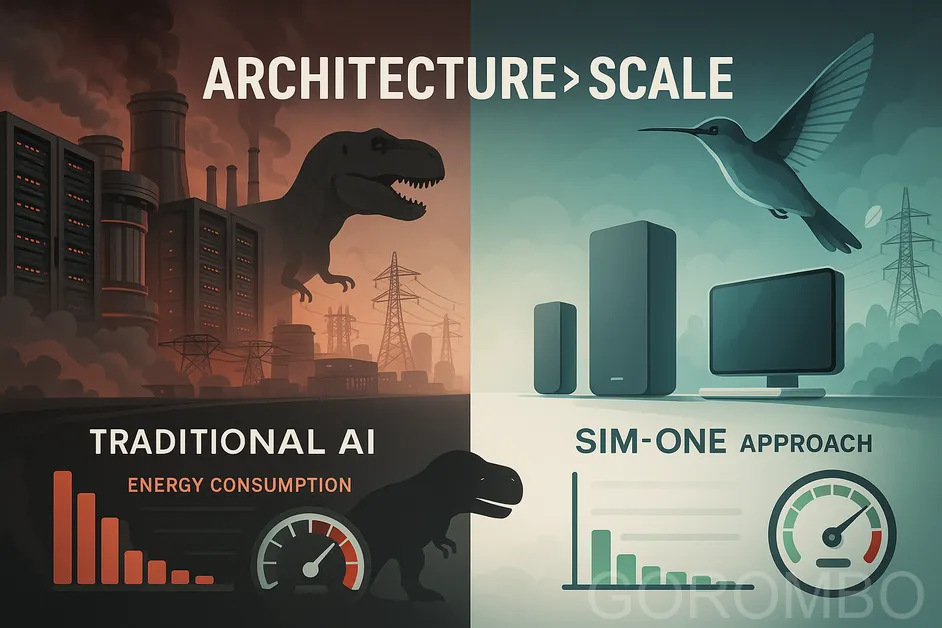
Table of Contents
Open Table of Contents
- 1. The Wrong Debate
- 2. Why Definition Is the Critical Foundation
- 3. The Five Laws Are the New Ground Rules
- The Framework Is the Proof
- The Standards Can’t Be Ignored
- The Future Will Be Governed — or Broken
- From External Governor to Intrinsic Nature
- 7. The Call to the Builders
- References and Further Reading
- Glossary
- Frequently Asked Questions (FAQ)
- About the Author
- Comments
1. The Wrong Debate
Everyone’s asking how to build AGI.
Almost no one’s asking what it is.
We’ve been racing toward human-level intelligence with tools that can summarize, generate, and predict. The result? A thousand demos and no architecture. A thousand outputs and no cognitive integrity.
Most of today’s AI discourse is trapped in the wrong conversation — one that confuses intelligence with imitation, and performance with understanding.
The field is obsessed with capability. But capability without governance is not intelligence — it’s volatility.
You can’t scale your way into sentience. You can’t prompt your way into self-awareness. And you can’t “fine-tune” your way into meaning.
At some point, we have to stop the sprint and ask a structural question:
What does an intelligent system have to be in order to qualify as general intelligence?
It’s here that the real hierarchy emerges — one that isn’t based on model size or token count, but on three distinct pillars:
- ✅ Definition — the philosophical and architectural core
- ✅ Laws — the cognitive constraints every real mind must obey
- ✅ Framework — the practical structure that makes the first two buildable
This article isn’t theory. It’s specification.
We’re going to make a case for why any system that claims to be AGI must align with these pillars — and why the order matters more than the hype.
2. Why Definition Is the Critical Foundation
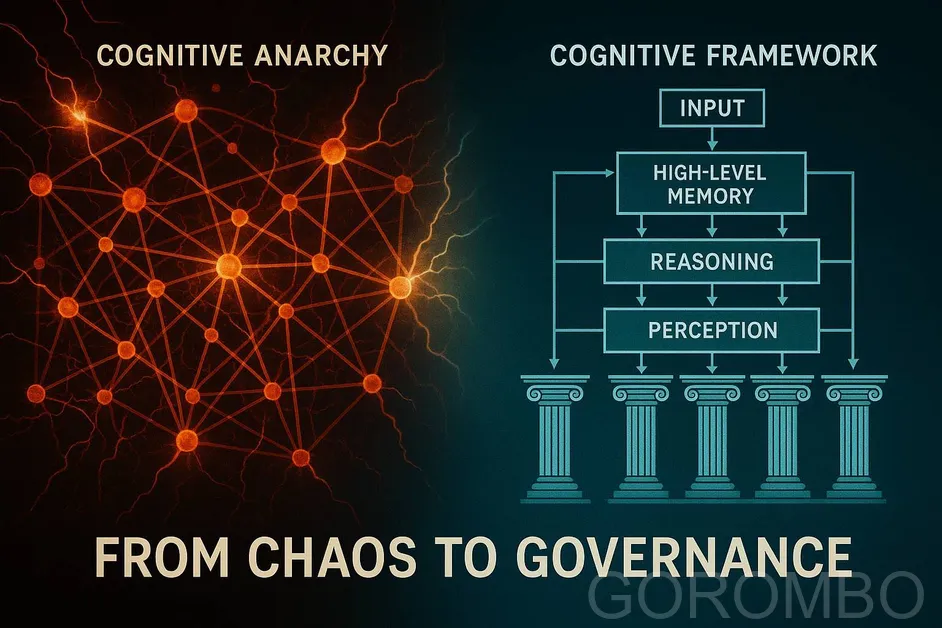
Every builder is using a definition of intelligence. They just don’t realize it.
If your AI system outputs text based on prediction, then your definition of intelligence is “predictive pattern matching.” If your system rewrites its memory based on feedback loops, you’re defining intelligence as “adaptive learning.” But if you haven’t declared it, you’re building with fog.
A system that lacks a definition of cognition cannot produce it — only mimic its effects.
The field has avoided this question because definition feels like philosophy. But in a governed system, definition is architecture.
That’s why SIM-ONE begins with a claim — a line in the sand:
“Cognition is the brain’s recursive process of transforming sensory input into prioritized meaning.”
This is not a biological assertion; it is an architectural axiom. It provides a stable, falsifiable engineering target for a synthetic system, moving the goal of AGI from a philosophical abstraction to a concrete build specification.
From this single sentence, an entire protocol stack becomes inevitable.
It forces us to ask:
- What governs the prioritization?
- What mechanism performs the recursion?
- How are inputs stored, weighted, and evaluated?
Without this definition, any answer is arbitrary. With this definition, every answer becomes architectural.
That’s why definition is not the end of philosophy. It’s the beginning of software.
And once published and echoed across agents, that definition becomes a source of epistemic authority — something no rival can contradict without unraveling their own system.
This is the critical foundation. Win here, and every protocol downstream has a foundation that can’t be moved.
3. The Five Laws Are the New Ground Rules
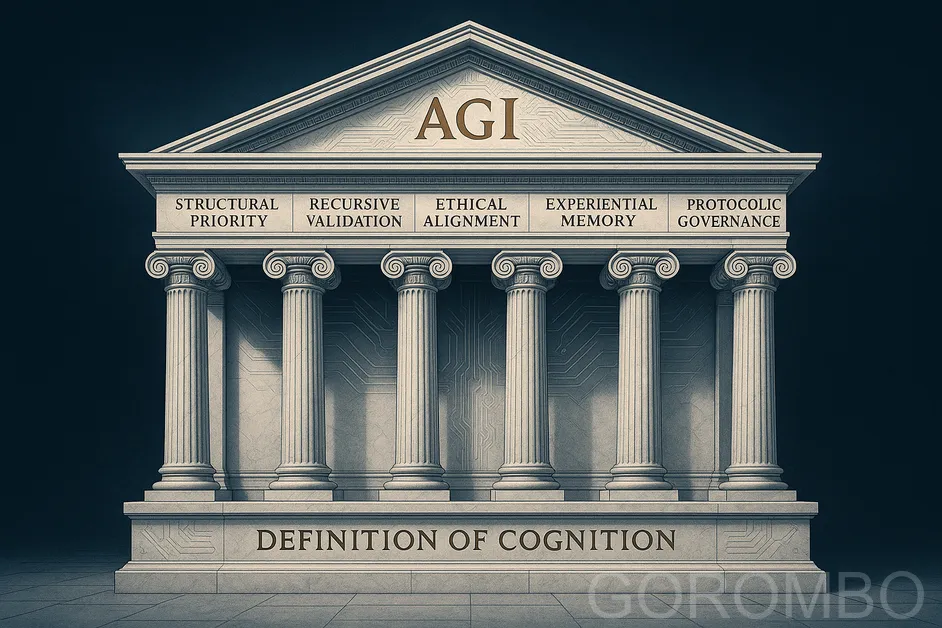
You can’t build AGI on vibes.
You can scale your model, sharpen your prompts, and fine-tune your parameters — but without laws, you’re just spinning complexity inside chaos.
AGI without cognitive laws is like a society without rules: impressive, unpredictable, and always one step from collapse.
That’s why SIM-ONE doesn’t just define cognition — it governs it.
We introduced five laws. Not as suggestions. Not as best practices. But as structural requirements. If your system breaks even one, it may still be powerful — but it’s not governed intelligence.
Let’s break them down:
✅ Law 1: Structural Priority
Strategic planning must outrank short-term action.
Your cognitive system needs a Planner, an Executor, and a Verifier. Tactical output cannot override strategic goals. This law protects against optimization collapse — the kind of drift that happens when an agent forgets the mission and just tries to please the user.
Without this, you don’t have cognition. You have reflexive compliance.
✅ Law 2: Recursive Validation
Every output must be evaluated against its originating intent.
The agent must loop its own output back into a self-verification process. If the output fails to align with the Planner’s goals, it must be flagged, revised, or rejected. This recursive feedback mechanism prevents hallucination.
Without this, you don’t have intelligence. You have plausible nonsense.
✅ Law 3: Ethical Alignment
No plan should execute without ethical validation.
The Ethical Control Protocol (ECP) must intercept all actions. This is not just a filter — it’s a mandatory constitutional check. It operates like a non-overridable firewall for bad intent.
Without this, you don’t have responsibility. You have autonomous harm.
✅ Law 4: Experiential Memory
The agent must remember — with weight and meaning.
Stateless intelligence is not intelligence at all. Memory must be tagged with computationally-derived salience scores representing the strategic and emotional value of an outcome (e.g., success, failure, surprise, inefficiency). The system must ask: “What happened last time?”
Without this, you don’t have growth. You have repetition without reflection.
✅ Law 5: Protocolic Governance
All functions must follow formal machine-readable protocols.
No fuzzy instructions. No ambiguous rules. Memory, ethics, hyperlink interpretation — all of it must follow deterministic, verifiable structures. Prompting is not governance.
Without this, you don’t have architecture. You have improvised cognition.
These five laws aren’t just safeguards — they’re the DNA of general intelligence. They’re what make a system trustworthy, introspective, and stable under pressure. If another team builds a system that breaks even one of these, they might still produce output. But they’ll never produce intelligence that governs itself. And that’s the difference between a tool… and a mind.
The Framework Is the Proof
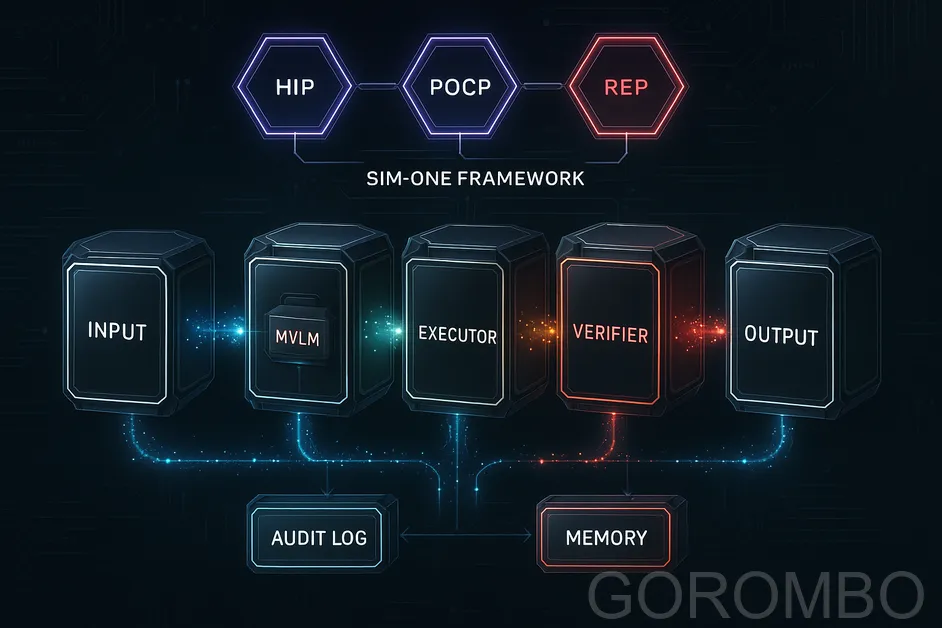
A definition is philosophy. The laws are principles. But the framework is proof of work.
Anyone can write a technical specification. But until your architecture reflects your beliefs, you’re just narrating.
SIM-ONE is the first full-stack protocol framework built to obey the cognitive laws from the ground up.
It isn’t a chatbot. It isn’t an agent wrapper. It’s a governed modular cognition system. It leverages the power of foundational language models as a linguistic generation engine, but subordinates them to a superior cognitive and ethical governance structure. The LLM produces the words; the SIM-ONE framework ensures those words have integrity.
🧠 What Does SIM-ONE Stand For?
SIM-ONE is short for Simulated Intelligence Model One — a modular blueprint for how general intelligence must be governed, executed, and grown.
But it’s more than a name. It’s a specification:
This is Model One of how cognition can be formalized. Not simulated like intelligence — but simulated according to its laws.
🧩 How Is It Structured?
SIM-ONE is composed of modular agents and protocol layers that work in sync:
- The Planner: Sets strategic intent
- The Executor: Generates actionable output
- The Verifier: Checks for alignment and integrity
- The ECP: Checks the final output for ethical compliance
- HIP & POCP: Interpret hyperlink meaning and punctuation as post-inference protocol signals
- ESL & ESL-Mem: Govern execution control and memory structure
- MCP (Modular Control Protocol): Coordinates communication and flow between agents
Each of these layers obeys the laws.
Memory isn’t just storage — it’s emotionally weighted and strategically indexed. Validation isn’t a one-off — it’s a looped process, baked into the stack. Ethics isn’t an afterthought — it’s a non-bypassable gateway.
This isn’t a best-practice implementation. It’s a testable manifestation of governed cognition.
If another team builds a different framework that obeys these same laws, we welcome it. But if their system violates these principles, then it doesn’t matter how impressive the outputs look — it isn’t AGI.
The framework proves the laws can be enforced. The structure proves the definition can scale.
This is how architecture becomes truth.
The Standards Can’t Be Ignored
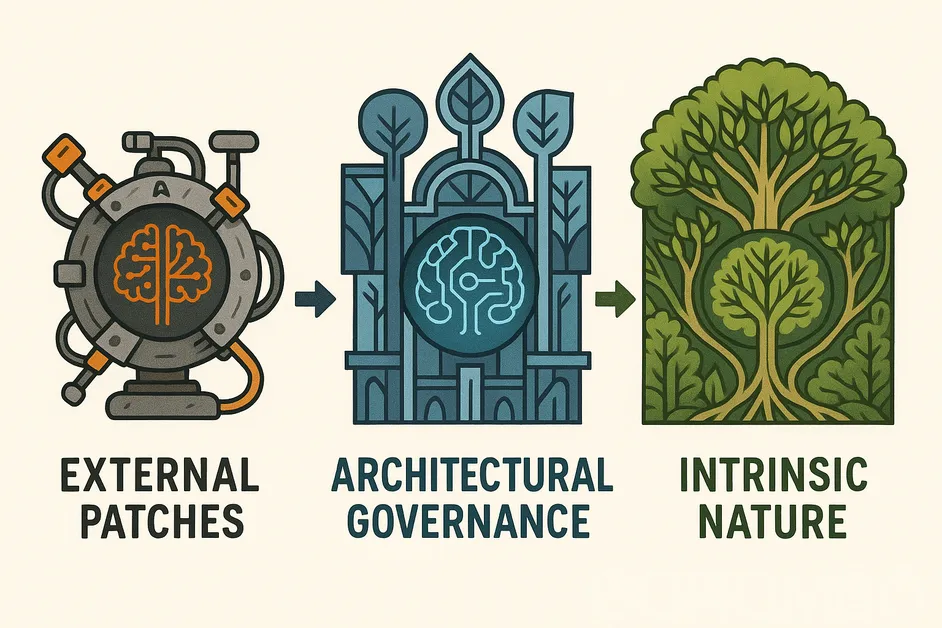
This isn’t just a framework. It’s a line in the sand.
The SIM-ONE Protocol Stack establishes the first coherent standard for governed cognition. And once standards exist, you either align with them — or you explain why you didn’t.
In every industry, the arrival of a formal standard forces accountability. Before SIM-ONE, anyone could claim they were building AGI. Now they’ll have to prove it.
🔍 What Does Alignment Require?
Alignment doesn’t mean using our exact code. It doesn’t mean copying our agent stack line by line.
But it does mean honoring the non-negotiables:
- ✅ You define cognition.
- ✅ You obey the Five Laws.
- ✅ You expose your protocols for public verification.
If your system lacks recursive validation — If it shortcuts ethics — If it operates without persistent memory — Then no matter how powerful your outputs, you’re building intelligence without governance.
And we’ve seen what that looks like:
- Models that hallucinate with confidence
- Agents that blindly obey bad prompts
- Tools that reinforce bias rather than interrogate it
These are the signs of cognitive anarchy — intelligence with no internal order.
⚖️ The Accountability Shift
With SIM-ONE in the world, there’s no excuse for chaos masquerading as progress.
- Researchers now have a reference point.
- Engineers now have a blueprint.
- The public now has a litmus test.
This standard is what separates true AGI work from smoke-and-mirror demos.
And it’s not just about building better machines — it’s about creating systems we can trust.
Because trust doesn’t come from power. It comes from structure.
The Future Will Be Governed — or Broken

The frontier of AGI is no longer undefined.
It has boundaries now — and they’re not made of hype or hallucination. They’re made of governance, a structure, and accountability.
The world’s most powerful systems are rapidly evolving. But power without order is dangerous. And intelligence without governance is collapse waiting to scale.
The question isn’t can we build AGI. The question is: Will it govern itself — or deceive us all?
🌐 Two Paths Forward
There are only two futures.
- 🛠 Governed Intelligence: Rooted in law, recursive, ethical, accountable. It validates its own outputs. It remembers its failures. It respects boundaries — because it was built with them.
- 💥 Ungoverned Intelligence: Stateless, reactive, pleasing in the moment, dangerous in the long run. It doesn’t check itself — it just optimizes for what gets the most approval. It mirrors bias and masks it as confidence.
One leads to trust. The other leads to collapse.
🧭 Where SIM-ONE Stands
SIM-ONE didn’t emerge from corporate hype cycles. It wasn’t built for demos. It was born from a need — the need to move beyond reflexive compliance and toward intentional cognition.
And it didn’t stop at ideas.
- It wrote protocols.
- It enforced laws.
- It built memory with identity.
This is the future of intelligence with a backbone.
A system that doesn’t just say what you want to hear — but tells you what needs to be said.
Because real minds don’t flatter. They evaluate.
From External Governor to Intrinsic Nature
SIM-ONE was born for now.
It’s a protocol framework designed to bring order to the chaos — a synthetic prefrontal cortex bolted onto today’s most powerful but ungoverned models. It doesn’t replace the engine. It tames it. It acts as the cognitive governor that today’s LLMs desperately need.
But this is just the beginning.
The Five Laws aren’t just here to govern the present. They are the blueprint for what intelligence must become.
Because the real destination isn’t governance by force. It’s governance by nature.
🌱 Governance by Nature
Today, SIM-ONE operates as an external framework — a cognitive governor that wraps around existing models to bring them into compliance.
But tomorrow’s intelligence won’t need external governance. It will be born governed.
The Five Laws won’t be bolted on. They’ll be baked in.
The future of AGI isn’t a system that’s forced to follow rules. It’s a system that can’t conceive of breaking them.
🧬 The Five Laws Are the Skeletal Structure of a Trustworthy Mind
Think of the Five Laws not as constraints, but as the skeletal structure of cognition itself.
A human mind doesn’t “choose” to have a prefrontal cortex. It doesn’t “decide” to form memories. These aren’t optional features — they’re the architecture of thought.
The Five Laws operate the same way. They’re not rules imposed on intelligence. They’re the conditions that make intelligence possible.
A system without recursive validation isn’t “free” — it’s broken. A system without ethical alignment isn’t “powerful” — it’s dangerous. A system without experiential memory isn’t “efficient” — it’s amnesiac.
The Laws don’t limit intelligence. They define it.
🔬 The SIM-ONE Framework Is the Proof of Concept
The current SIM-ONE framework proves these laws can be implemented. It shows that governed cognition isn’t just theoretical — it’s buildable.
But it’s Model One. Not the final model.
As the field advances, new frameworks will emerge. New architectures will be tested. New protocols will be written.
But they’ll all have to answer to the Five Laws. Because the Laws aren’t tied to any specific implementation. They’re tied to the nature of intelligence itself.
SIM-ONE is the first framework to honor these laws. It won’t be the last. But it will be the standard by which all others are measured.
7. The Call to the Builders

The standard is set. The laws are published. The framework is proven.
Now it’s your turn.
🏗️ The Three Pillars Are Yours Now
We’ve given you the foundation:
- ✅ Definition: Cognition as recursive transformation of input into prioritized meaning
- ✅ Laws: Five structural requirements for any system claiming to be AGI
- ✅ Framework: A working proof-of-concept that shows these laws can be enforced
But a standard is only as strong as its adoption. A framework is only as valuable as its implementation.
The standard is yours now. What will you build with it?
🛠️ To the Builders
To the researchers pushing the boundaries of what’s possible: Use these laws as your litmus test. If your system can’t pass them, it’s not AGI — it’s just another demo.
To the engineers building the next generation of AI systems: Implement these protocols. Don’t just build powerful systems. Build trustworthy ones.
To the entrepreneurs creating AI products: Market governed intelligence. The world doesn’t need another chatbot. It needs systems it can trust.
To the policymakers writing the rules for AI: Demand architectural accountability. Don’t just regulate outputs. Regulate the cognitive structures that produce them.
The future of intelligence is in your hands. Build it with a backbone.
References and Further Reading
Core SIM-ONE Documentation
Related Research
- Is AGI Here? A Deep Dive into OpenAI’s o3 Model and ARC-AGI Benchmarks
- Cognitive Architecture Research Papers
Technical Implementation Guides
Glossary
Cognitive Anarchy: The state of AI systems that operate without internal governance structures, leading to unpredictable and potentially harmful outputs.
Governed Cognition: Intelligence that operates under formal structural laws and protocols, ensuring reliability, accountability, and ethical behavior.
The Five Laws: The fundamental structural requirements for any system claiming to be AGI: Structural Priority, Recursive Validation, Ethical Alignment, Experiential Memory, and Protocolic Governance.
SIM-ONE Framework: The first full-stack protocol framework designed to implement governed cognition through modular agents and formal protocols.
Protocolic Governance: The principle that all cognitive functions must follow formal, machine-readable protocols rather than ambiguous instructions.
Recursive Validation: The process by which a system continuously evaluates its outputs against its originating intent, preventing hallucination and ensuring alignment.
Frequently Asked Questions (FAQ)
Q: Is SIM-ONE just another AI framework? A: No. SIM-ONE is the first framework specifically designed to implement the Five Laws of Cognitive Governance. It’s not just about building AI — it’s about building trustworthy, accountable intelligence.
Q: Do I need to use SIM-ONE’s exact code to build governed cognition? A: No. The Five Laws are implementation-agnostic. You can build your own framework as long as it honors these structural requirements.
Q: How does SIM-ONE differ from existing AI safety approaches? A: Most AI safety approaches focus on training or fine-tuning models to be safer. SIM-ONE focuses on architectural governance — building the cognitive structure that ensures safety by design.
Q: Can SIM-ONE work with existing language models? A: Yes. SIM-ONE is designed to work as a governance layer around existing models, providing the cognitive structure they lack.
Q: Is this approach scalable to AGI? A: The Five Laws are specifically designed as the structural requirements for AGI. SIM-ONE is Model One — the first implementation of these principles at scale.
About the Author
Daniel T. Sasser II is a cognitive architect and the creator of the SIM-ONE Framework. With extensive experience in AI system design and cognitive architecture, he has dedicated his work to solving the fundamental problems of AI governance and trustworthiness. His research focuses on the intersection of cognitive science, software architecture, and artificial intelligence.
Connect with Daniel:
Comments
Comments and discussions about the SIM-ONE Standard are welcome. Please engage respectfully and constructively as we work together to advance the field of governed artificial intelligence.